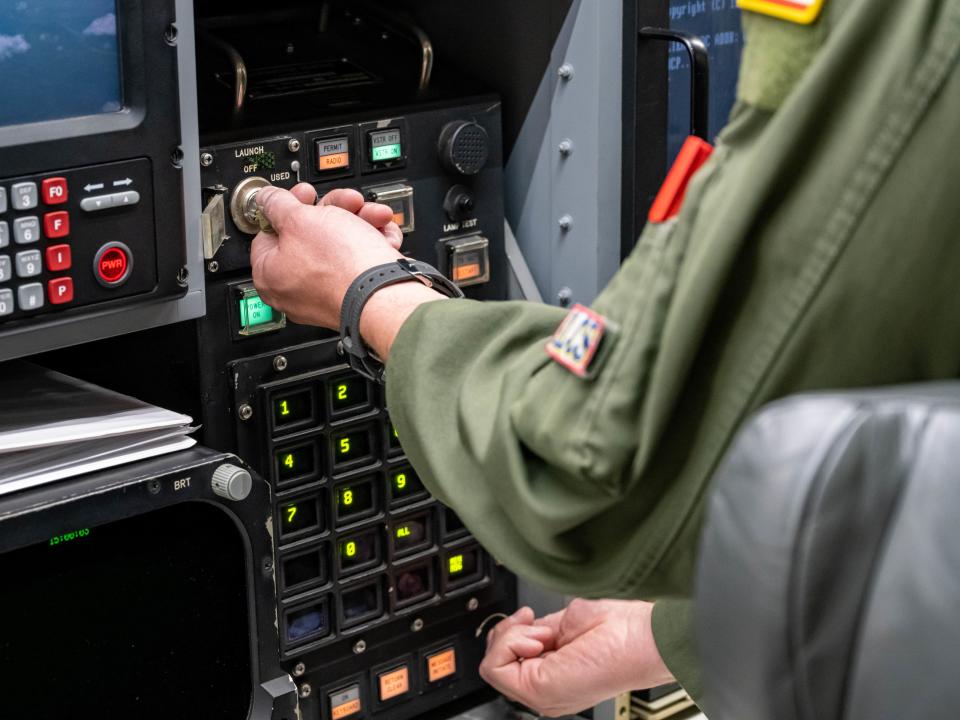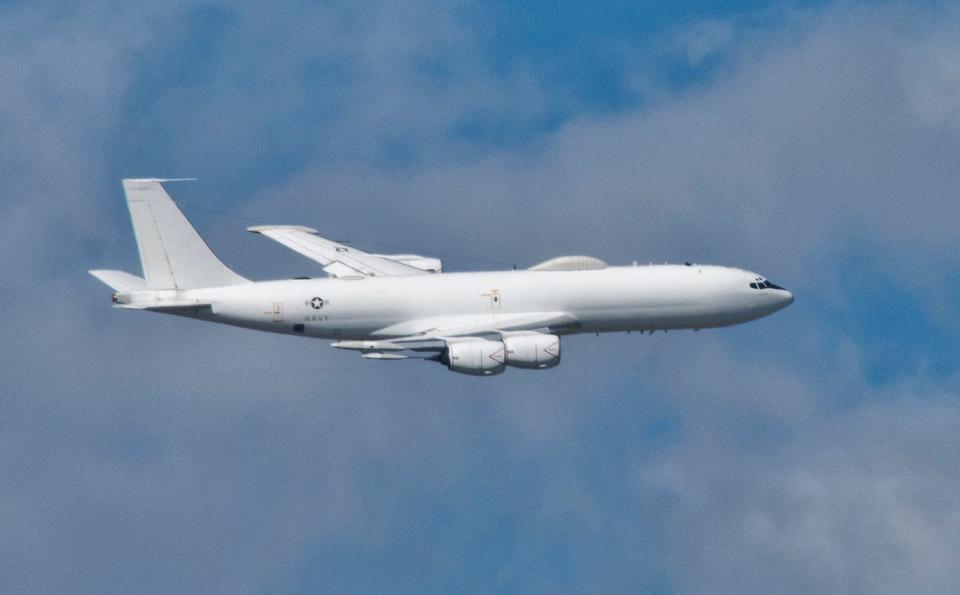Rare photo captures the moment the keys were turned on a US military 'doomsday' plane to launch an ICBM
The US military test-launched a Minuteman III intercontinental ballistic missile last week.
Newly released Air Force photos show the moment an airman turned the keys to initiate the launch.
The missile's re-entry vehicle traveled over 4,000 miles to a target location in the Pacific.
The US military recently test-fired an unarmed nuclear-capable long-range ballistic missile. The launch was executed aboard a "doomsday" plane, and a newly released photo captures the moment an airman turned the keys to initiate the launch.
An unarmed silo-based Minuteman III intercontinental ballistic missile blasted off from Vandenberg Space Force Base early in the morning on April 19, and its reentry vehicle traveled about 4,200 miles to a location in the Marshall Islands in the middle of the Pacific Ocean, US Strategic Command said in a statement.
Test-fired ICBMs are typically launched by missileers posted in underground bunkers, but last week's test was carried out by US Air Force missileers and engineers from the 625th Strategic Operations Squadron and a US Navy aircrew from Fleet Air Reconnaissance Squadron 4 from aboard a Navy E-6B Mercury aircraft, according to US Strategic Command.
The Air Force on Monday published several photos from the launch, including one that shows a crew member turning two keys at the same time to ignite the Minuteman launch. This action is different from one that would take place at an underground bunker, where two missileers would turn the keys at two separate stations.
Photos like the one below, which was first spotted by The War Zone, are rare and have only been released on a few occasions.

The E-6B Mercury is a modified Boeing 707 that is outfitted with an Airborne Launch Control System (ALCS) and operates as a strategic airborne command post and communications relay. It's the only aircraft in the Navy's inventory able to direct the launch of an ICBM.
As this capability would likely only be used in a crisis, the E-6B is referred to as a 'doomsday' plane. The term, however, is more frequently used to describe the hardened Air Force E-4B aircraft, which are able to serve as flying command posts for the president and other senior officials in an emergency.
The E-6B can be configured to carry out either the "Take Charge and Move Out" (TACAMO) mission, which entails maintaining critical connectivity between the National Command Authority and naval ballistic missile forces, or the airborne strategic command post mission, according to the Navy. And with its ACLS capability, the aircraft can launch silo-based ICBMs.
"ALCS provides the nation's only survivable backup launch capability to our land-based ICBM force," said Maj. Hayden McVeigh, the ALCS deputy crew commander, in the Air Force statement. "This capability enhances the lethality of the Minuteman III ICBM and greatly increases the deterrent value of our nuclear forces."

US Strategic Command said last week's launch is "part of routine and periodic activities" to ensure that Washington's nuclear capabilities are stable. It added that the test was carried out after months of preparation and was "not the result" of any current events.
Several times a year, an ICBM will be pulled from one of the Air Force Global Strike Command missile wings for an Operational Test Launch at Vandenberg. The tests allow the US military to evaluate weapon performance in settings that closely simulate real-world operational environments.
"Strategic deterrence is the most critical mission in our Air Force and the cornerstone of America's defense," said Gen. Thomas Bussiere, commander of Air Force Global Strike Command, in an April 19 statement, adding that "this test launch reinforces what our allies and partners already know — we're always ready to defend the United States with combat ready nuclear forces anytime, anywhere, on order, to conduct global strike."
Read the original article on Business Insider

